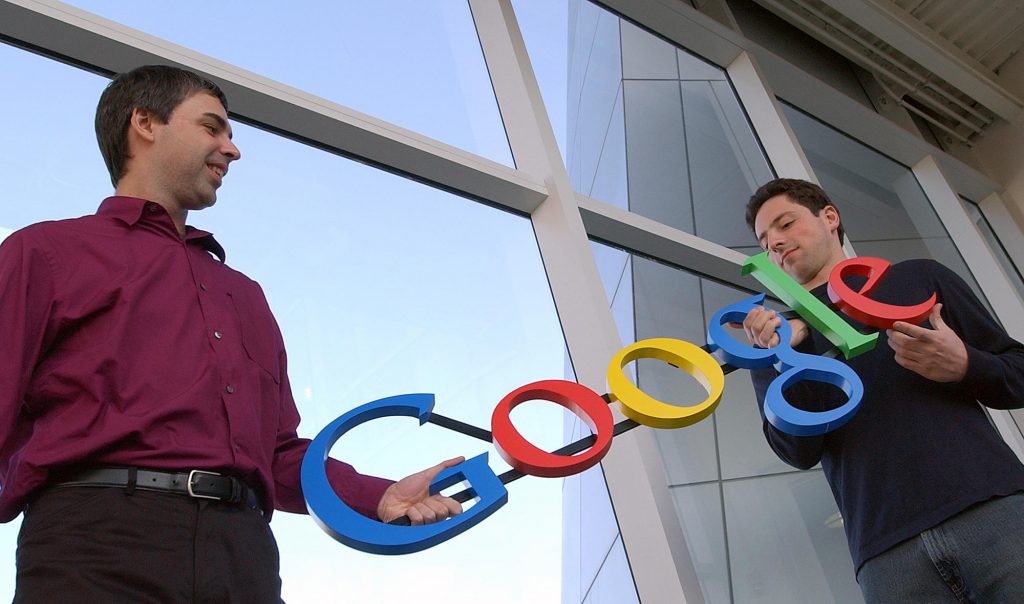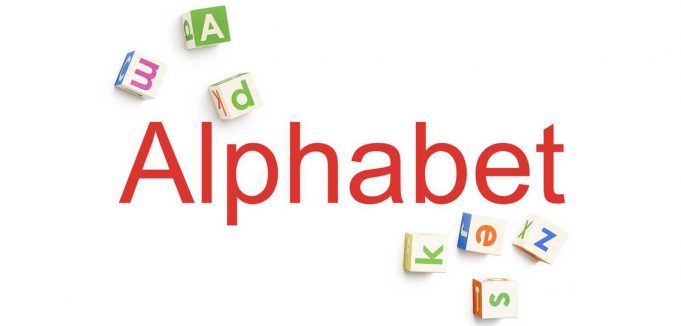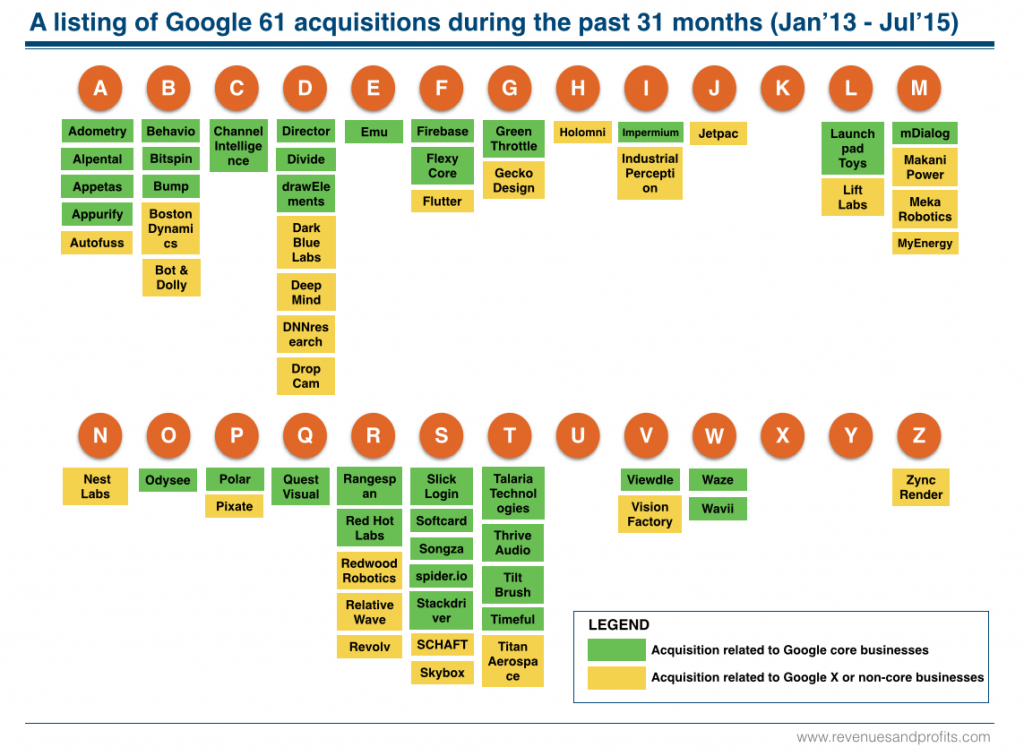Google surprised the world last Monday, August 10, 2015, with the announcement about the creation of a new company, called Alphabet. In this post, we will try to answer why Google created Alphabet by looking at the Google acquisitions over the past several years. We look at whether the acquisitions support the Google’s core business or a Google X project.

What is Alphabet?
As per the announcement by Larry Page
“Alphabet is mostly a collection of companies. The largest of which, of course, is Google. This newer Google is a bit slimmed down, with the companies that are pretty far afield of our main internet products contained in Alphabet instead.”
The examples of far afield efforts include Google health efforts in Life Sciences (works on glucose-sensing contact lens) and Calico (focused on longevity). As per Page,
“Alphabet will also include our X lab, which incubates new efforts like Wing, our drone delivery effort. We are also stoked about growing our investment arms, Ventures and Capital, as part of this new structure.”

Why Google created Alphabet?
Page said, “We believe this allows us more management scale, as we can run things independently that aren’t very related.” He also said, “Alphabet is about businesses prospering through strong leaders and independence. In general, our model is to have a strong CEO who runs each business.” He added that they do not intend Alphabet to become a big consumer brand with related products. Instead, Alphabet companies should have independence and develop their own brands.
Why Google created Alphabet now? We believe this can be answered by looking at the Google acquisitions over the past several years. We did an analysis of the same.
Google has made 182 acquisitions until August 17, 2015. Some were popular. Some were not. Some were big. Some were small. Some of them found a place in Google annual reports over the last 11 years from 2004 to 2014. These include (in reverse chronological order): Skybox Imaging (Aug’14), Dropcam (Jul’14), Nest Labs (Feb’14), Waze (Jun’13), Motorola Mobility (May’12), ITA Software (Apr’11), Widevine Technologies (Dec’10), Slide (Aug’10), AdMob (May’10), On2 (Feb’10), DoubleClick (Mar’08), Postini (Sep’07), Youtube (Nov’06), dMarc Broadcasting (Feb’06).

Some of the acquisitions supported their core search and display advertising business, which will be referred to as Google core business. Other acquisitions supported Google X projects. Google X is an semi-secret facility created by Google in 2010 to work on major technological advancements.
As of late 2014, some of the key Google X projects that have been revealed are: Project Self-Driving Car; Project Wing; Project Glass; Project Contact Lens; and Project Loon.
Some of the acquisitions were integrated with Google non-core businesses such as Nest and Calico. Google acquired Nest Labs in February 2014. Nest focuses on home automation products such as self-learning thermostats and smoke detectors. Google announced creation of Calico, a life sciences company, in September 2013.

The following diagram maps the acquisitions made by Google since 2013 onto the letters of an Alphabet. If an acquisition supports a core business of Google, then it is color-coded as green. These acquisitions will be part of the newer slimmed down Google. If an acquisition supports a non-core business of Google or a Google X project, then it is color coded as yellow. These will be part of newer subsidiaries of Alphabet.
The point of this diagram is not to just show all the Google acquisitions by the letters of an alphabet. But, the point is to visually represent the fact that Google has been increasingly making acquisitions that are not related to their core business. Nearly half of the acquisitions since 2013 are related to Google non-core businesses or support Google X projects. There were very few acquisitions related to non-core businesses or Google X during 2012 or the years before that.
All the non-core business acquisitions and the increased momentum of Google activities in the non-core business areas may have necessitated the need for immediate creation of Alphabet.

Google plans to implement segment reporting with their new structure from Q4’15.
As per Google, their mission is to organize the world’s information and make it universally accessible and useful. However, the nature of non-core business acquisitions suggests that Google wants to do more. That’s why they created Alphabet. It will be interesting to see if the Google founders come up with a new mission statement for Alphabet as well.










